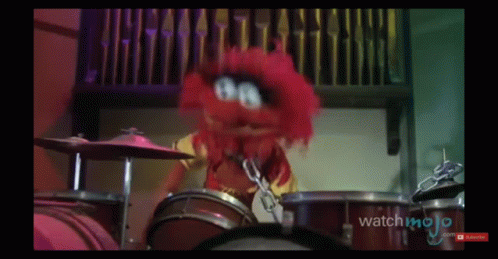Rhythm & Melody
Rhythm is the combination of sound, silence, and meter as a sound without any interruption would simply be a long note. It would have an initial attack and perhaps sustain, however as we’ve covered in a previous lesson, once it goes into the decay phase, it will eventually result in silence as shown in example 1 of the following image.
If you take that same long note and break it up by introducing evenly spaced silences, you now have a series of notes … each with their own attack, sustain, and decay as shown in example 2 of the same image.
Applying meter to the sounds, will introduce more emphasis on some notes and less on others depending on the beat on which each note falls on, which results in different notes with varying volumes, including moments of actual complete silence as shown in example 3.
Visually, this is how it would look:

While clapping out this rhythm would result in steady beats that are evenly spaced apart, there would be obvious volume differences between each beat. The difference in volumes, called dynamics, are what makes the rhythm sound more human since a human cannot control volume so much that every note would consistently be at specific volumes. Although imperfect, this is an important part of ‘feel’ and ‘groove’.
If the rhythm above is being produced through a percussive instrument such as a drum, each note could have it’s own timbre if different parts of the drum are used for each note. For example, the first note can be a bass drum, the second can be a closed high-hat, the third can be a snare, and the fourth can be a closed high-hat once again.
The same above principles can be applied to non percussive instruments of course. Rather than playing different instruments as would be the case for a drum, melodic instruments allow you to change the pitch of the different notes and even sustain notes for longer or shorter periods by using any of the note duration we covered in the previous lesson. The timbre of the instrument would be consistent but the pitches produced by that instrument would vary instead.
When multiple pitches and note duration (including rests) are applied, you have what is called a ‘melody’. Of course, your melody can intentionally be repetitive notes of the same pitch or duration however in that case, the ‘melody’ would be more rhythmic than melodic as ‘melody’ implies that multiple pitches are occurring linearly. In fact, pitches matter more to melody than note duration as note duration is an attribute that falls within the topic of ‘time’ and therefore more rhythmic than melodic. Unlike the beat, which continues throughout a song, various combinations of notes and rests can exist within a measure and as shown, when a pattern of notes (and rests) repeats, this results in a rhythm as well. Therefore while one instrument such as a drum plays one rhythm, a melody or other instrument can play an independent rhythm of it’s own. Since they both share the same pulse or beat however, they will be synchronized since their meter and overall timing will either be the same or a subdivision of the beat. In the example below we see to staves (plural for staff) one labeled as ‘Clap 1’ and the other is ‘Clap 2’. which suggests that there are 2 people (or instruments) that will play the selection of music below. Clap 1 has a rhythm that spans 2 measures as measure 1 repeats at measure 3 and measure 2 repeats at measure 4. To keep things simple, I applied the same repetition to Clap 2. Notice however that the pattern for Clap 1 is different than that of Clap 2. When they play however, although they will have individual rhythms, they will be in sync since they are following the same pulse, or Tempo, of 90bpm and they will follow the same Meter therefore they will both put more emphasis on the first beat of each measure, slightly less emphasis on notes over beat 3, and even less emphasis on beats 2 and 4.

